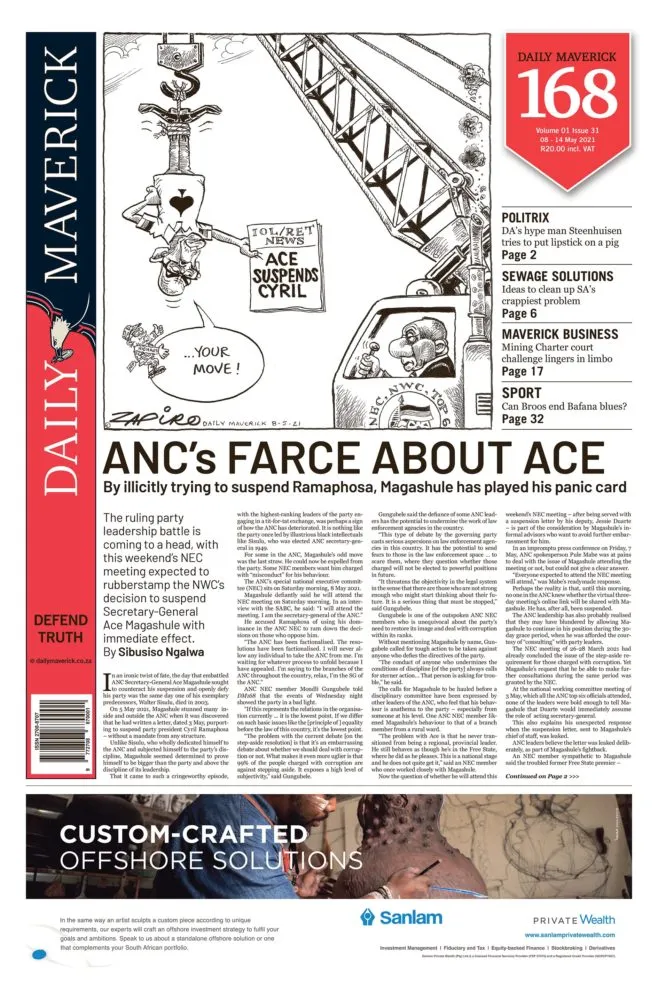First published in the Daily Maverick 168 weekly newspaper.
The price of oil had jumped from $4 a barrel to $12 and his mind was occupied with the need for alternative energy sources and improved batteries for energy storage. He was later joined in this quest by PhD student Michael Thackeray. Their studies into battery materials heralded the start of a glorious 20-year period when the CSIR, supported by Anglo American, De Beers and the South African Inventions Development Corporation, as it was then known, made major contributions to advancing international battery science and technology.
By 1984, the Zebra (sodium-nickel chloride) battery had been built and demonstrated in an electric vehicle, and commercialisation efforts began in earnest. But they were way ahead of their time and in 1986 the CSIR sold its stake in the Zebra battery and 20 years later Anglo American and Daimler-Benz (which had joined the commercialisation efforts) withdrew from further development of the battery. Meanwhile, Thackeray had turned his attention to lithium battery research, resulting in global recognition for him and his team, and a veritable treasure trove of global patents for the CSIR. This technology was successfully licensed to the major Japanese lithium battery manufacturers, among others, according to a paper penned by Thackeray himself, Twenty Golden Years of Battery R&D at CSIR, 1974 – 1994.
In 1992, after supporting lithium battery research for a decade, the CSIR ended its investment in this field and Thackeray moved to the US to continue his research. As it turns out, lithium-ion batteries are now a strategic resource and one can’t help but wonder what would have happened if Anglo and the CSIR had decided to invest in both sodium and lithium battery technologies over the longer term. I’m not telling this story to cry over spilt milk but to show that commercialising technology is a long and difficult process that requires great fundamental research, staying power and commercialisation partners with vision.
SA has elements of all three but has seldom managed to glue them together, and the commercialisation of tertiary research is as elusive today as it was 30 years ago. But a new initiative suggests this may be changing. The R230-million University Technology Fund, launched by the private sector-funded SA SME Fund late in 2020, supported by the University of Cape Town (UCT) and Stellenbosch University, and managed by professional fund manager Stocks & Strauss, is attracting attention, including from commercial funders. And while the pension funds are not quite ready to recognise the commercialisation of university intellectual property as a viable asset class, they are teetering on the brink, says Ketso Gordhan, who runs the SA SME Fund. When they do, the additional funding will be transformative, he adds.
What helps is that a global spotlight has been shone on the viability of commercialising university research thanks to the success of the University of Oxford’s spinout company, Vaccitech, which owns the biotechnology underpinning the AstraZeneca vaccine, among others. Vaccitech is partially owned by its founders, professors Sarah Gilbert and Adrian Hill, as well as the University of Oxford and its technology commercialisation company, Oxford Sciences Innovation (OSI). Other investors include Alphabet, via its venture capital fund, and Sequoia Capital, known for investing in tech start-ups. I should add that the biotech underpinning the vaccine was developed at Oxford over two decades – not two months or even two years.
The man responsible for taking OSI from a small fund seeded with £4-million in 2006 to one of the world’s leading university technology commercialisation organisations is Tom Hockaday, who also happens to be the chairman of SA’s University Technology Fund. He has since left OSI and spends his time supporting university business interactions, university technology transfer and seed fund management for universities, investors and governments.
His wisdom and experience could prove invaluable in SA. Talking in an online seminar hosted by the SA SME Fund, Hockaday stressed that successfully commercialising research is a complex process. First and foremost, the role of government in funding basic research is essential; also, look after your academics and don’t always assume the ideas will come from engineering – you may be surprised; involve the private sector; take your time – don’t pull the tree out to inspect the roots. And build an innovation community, he said. While South Africa has always had elements of this community, it was heavily siloed. This is changing as the venture capital industry grows in the country, and the entire system is learning to work together, says Gordhan.
But Hockaday had another subtle but powerful message: universities are part of society and as such must balance the desire for income against social impact. From previous experience, OSI has learnt that commercialisation for profit is good, but it is not the only way. It was agreed, before licensing the biotechnology for the development of the Covid-19 vaccine, that it would, during the pandemic, be not-for-profit.
“If your primary purpose is to generate impact, you will probably make money along the way. If your primary purpose is to generate profit, go back to the drawing board,” Hockaday said.
It’s a balance that we in SA understand.
That said, economic growth is also an important objective. If, as in the US, privately held start-ups worth more than $1-billion are called unicorns, then perhaps we, too, should have a name for our R1-billion start-ups? UCT’s head of innovation, Dr Andrew Bailey, believes they should be called quaggas, adding that there may be two or three potential quaggas lurking in the SA University Fund. I can’t wait to see them. DM168
This story first appeared in our weekly Daily Maverick 168 newspaper which is available for free to Pick n Pay Smart Shoppers at these Pick n Pay stores.

















 Become an Insider
Become an Insider
Comments - Please login in order to comment.